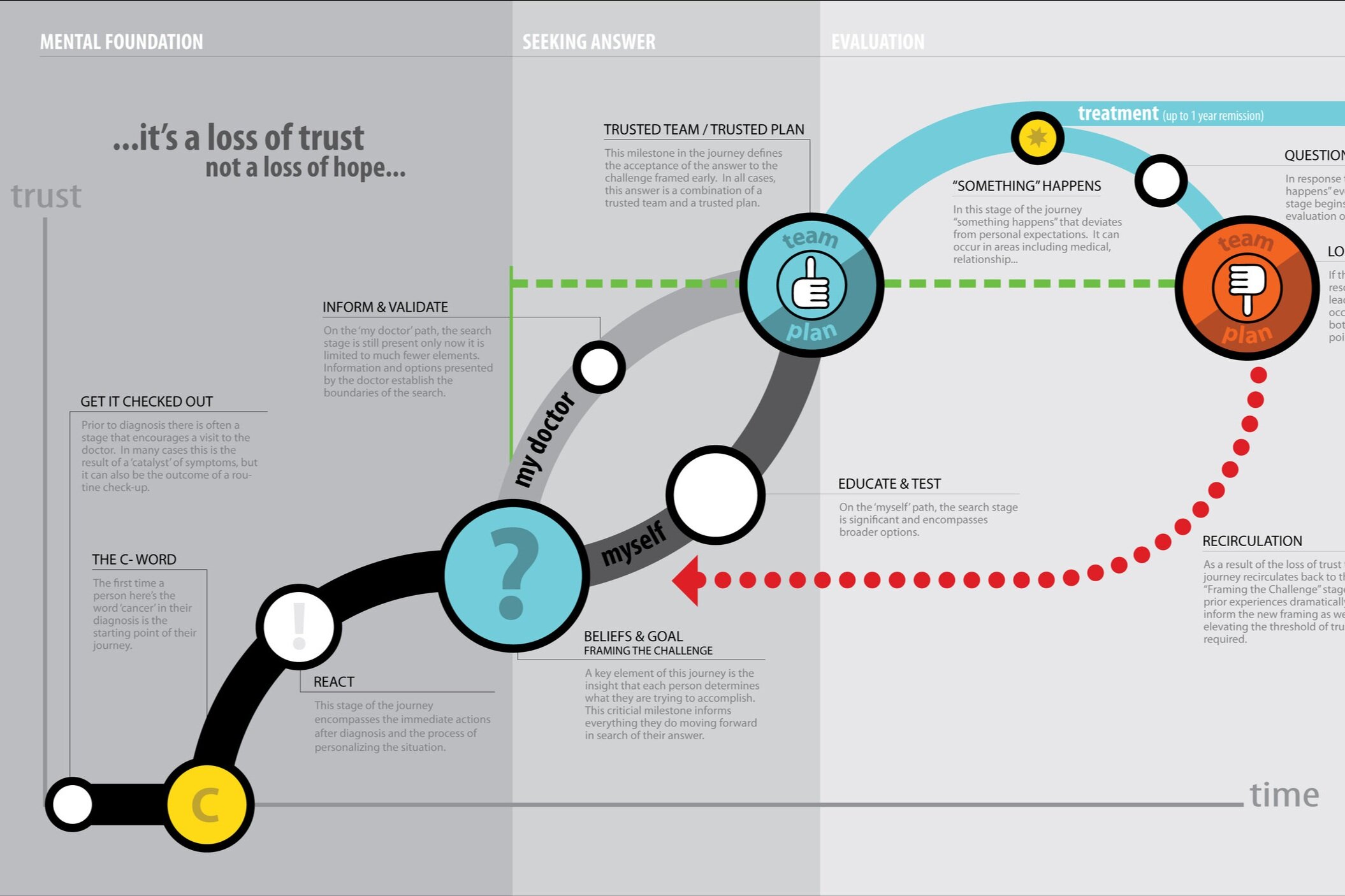
Uncovering the journey cancer patients take to finding treatment.
Revealing opportunity by seeing the journey through patient’s eyes
A nationwide cancer treatment network was interested in serving more patients with their unique approach to care. While they were one of the earliest examples of patient-centered care, their perspective was contained to the experience delivered to existing patients. Little was known about the entire experience a person diagnosed with cancer has before arriving at their treatment center. In conjunction with a large consortium, we applied a journey research methodology to study the entire journey and how they make a decision on where to get help. The result was a 3 stage journey, where 2 stages occur before even stepping foot in a treatment center. We uncovered that patients took 2 different paths to their decision, but all of them were seeking a sense of trust in their provider AND treatment plan. Progress or regression in their journey was determined by this path to trust.
Identifying strategies to deliver trust
Equipped with the patient decision-making model anchored to trust, we developed a structure for further understanding that goal. Ultimately, 7 dimensions of trust were defined that explicitly described an action that was tied to the development of trust. Further analysis of our journey research revealed a common set of roles that were present in the lives of cancer patients that served to influence them along their journey. Through additional quantitative methods, we defined which roles our client, a treatment center, was invited to play in the life of a patient and connected that role to the specific dimension of trust that they needed to deliver.
Deploying the model to help more patients
Our new journey model combining the stages of progress, the dimensions of trust and the roles in patients’ lives provided a completely new tool for the organization to connect with more patients seeking help. This tool informed new engagement strategies inside and outside of the facility. One powerful example was optimizations made to a call center to help specialists more precisely understand the person they were speaking with and provide the most relevant information they needed in their journey.



